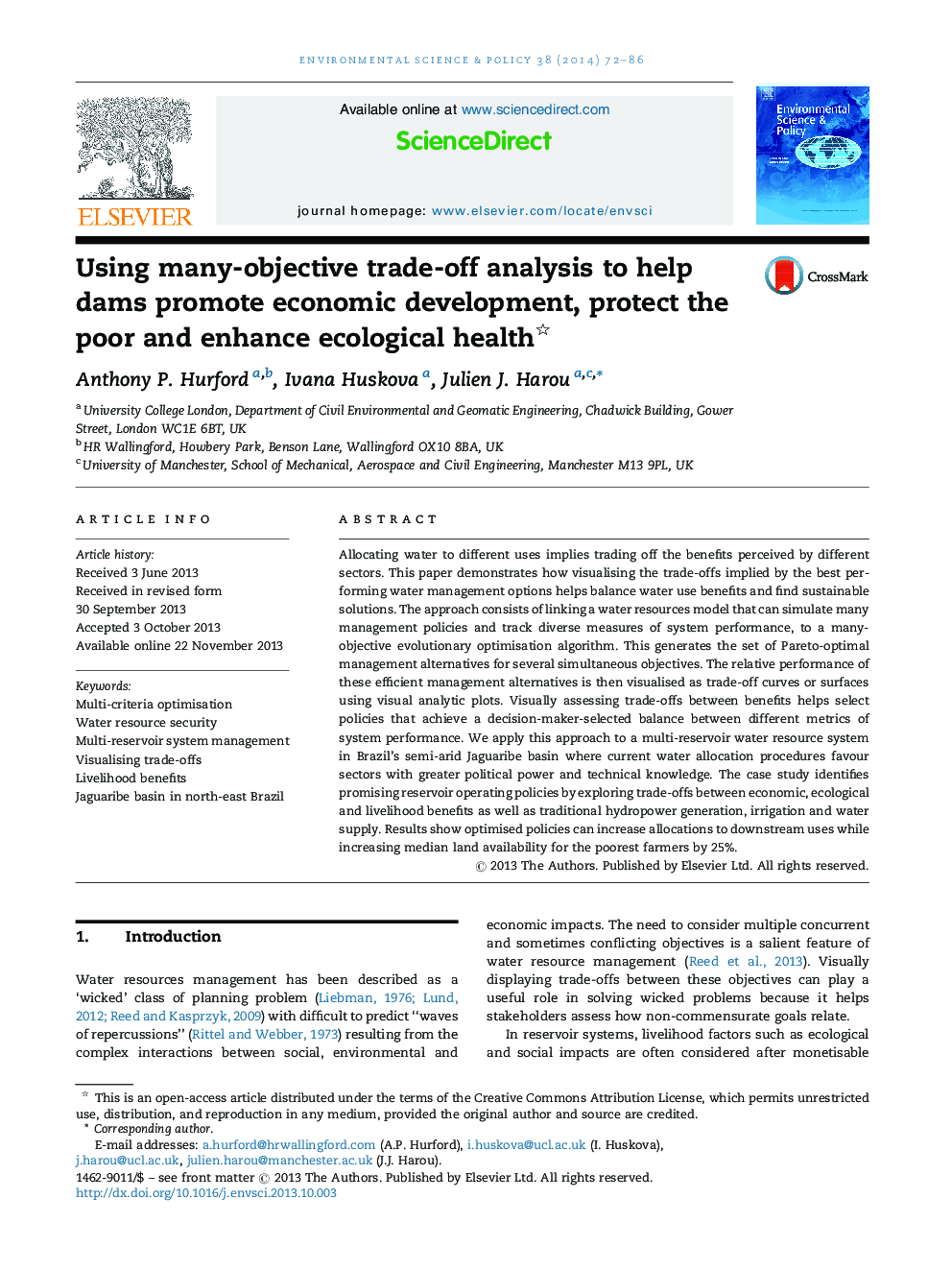| Article ID | Journal | Published Year | Pages | File Type |
|---|---|---|---|---|
| 7467924 | Environmental Science & Policy | 2014 | 15 Pages |
Abstract
Allocating water to different uses implies trading off the benefits perceived by different sectors. This paper demonstrates how visualising the trade-offs implied by the best performing water management options helps balance water use benefits and find sustainable solutions. The approach consists of linking a water resources model that can simulate many management policies and track diverse measures of system performance, to a many-objective evolutionary optimisation algorithm. This generates the set of Pareto-optimal management alternatives for several simultaneous objectives. The relative performance of these efficient management alternatives is then visualised as trade-off curves or surfaces using visual analytic plots. Visually assessing trade-offs between benefits helps select policies that achieve a decision-maker-selected balance between different metrics of system performance. We apply this approach to a multi-reservoir water resource system in Brazil's semi-arid Jaguaribe basin where current water allocation procedures favour sectors with greater political power and technical knowledge. The case study identifies promising reservoir operating policies by exploring trade-offs between economic, ecological and livelihood benefits as well as traditional hydropower generation, irrigation and water supply. Results show optimised policies can increase allocations to downstream uses while increasing median land availability for the poorest farmers by 25%.
Keywords
Related Topics
Physical Sciences and Engineering
Energy
Renewable Energy, Sustainability and the Environment
Authors
Anthony P. Hurford, Ivana Huskova, Julien J. Harou,
